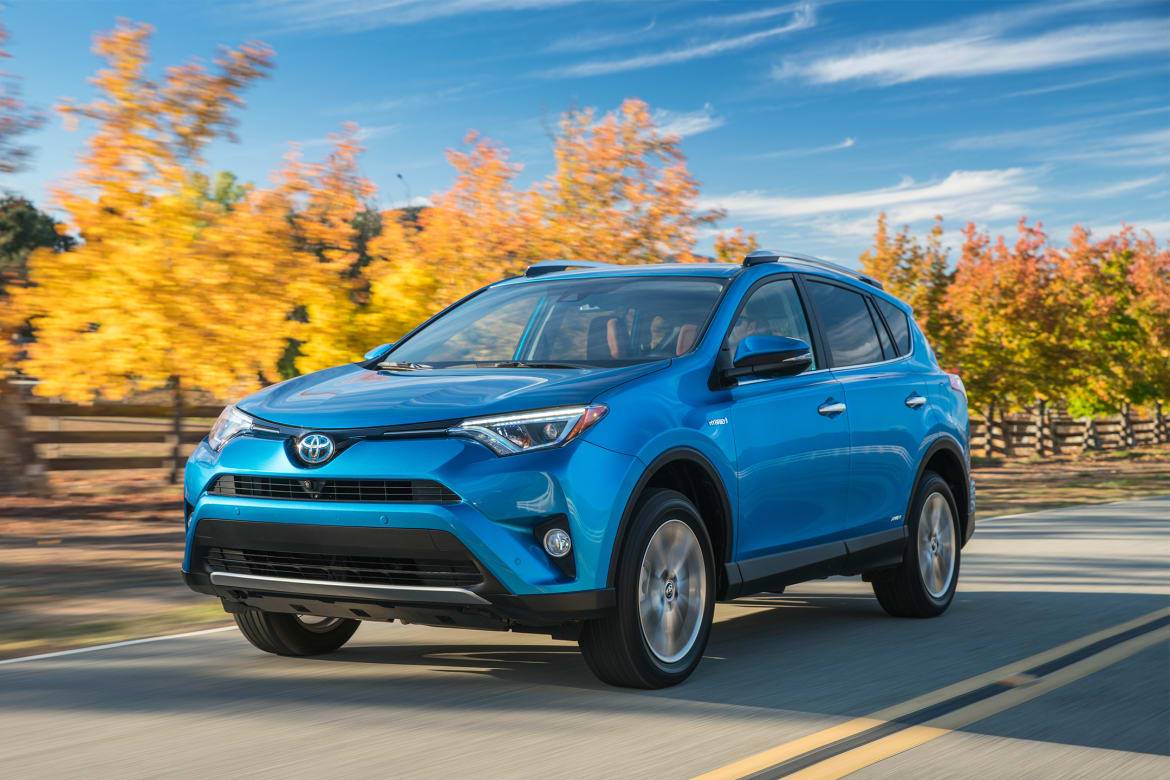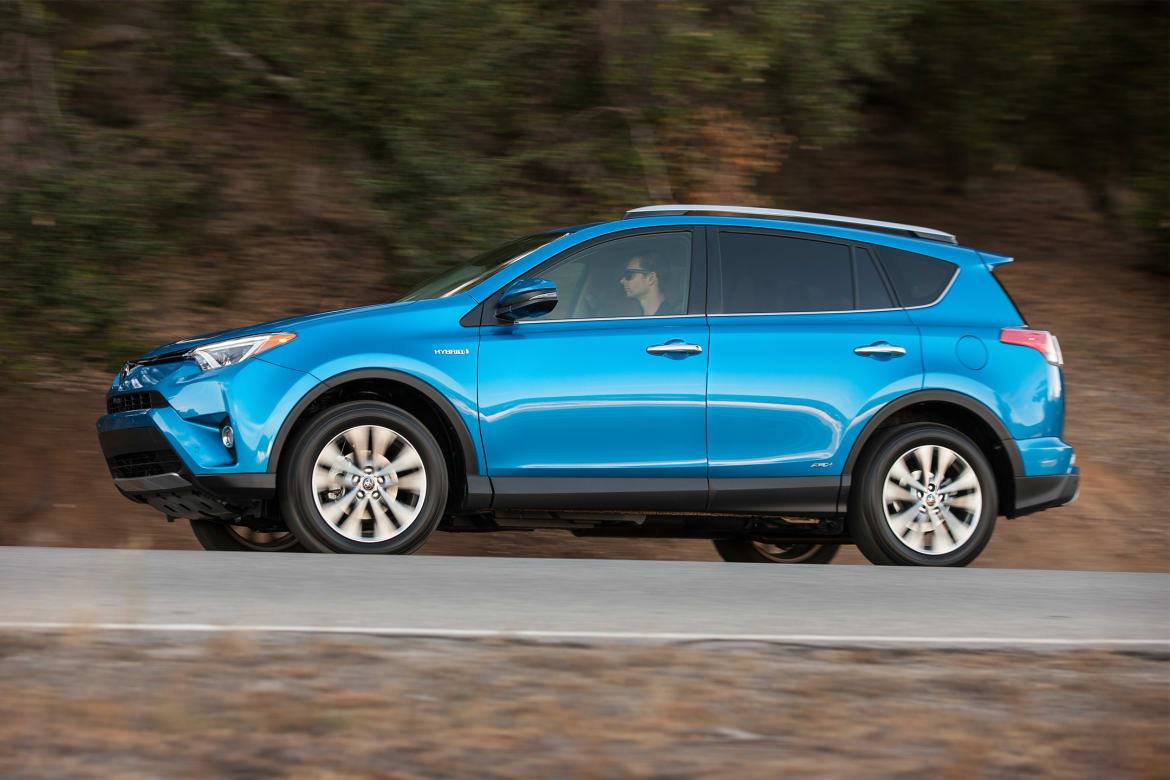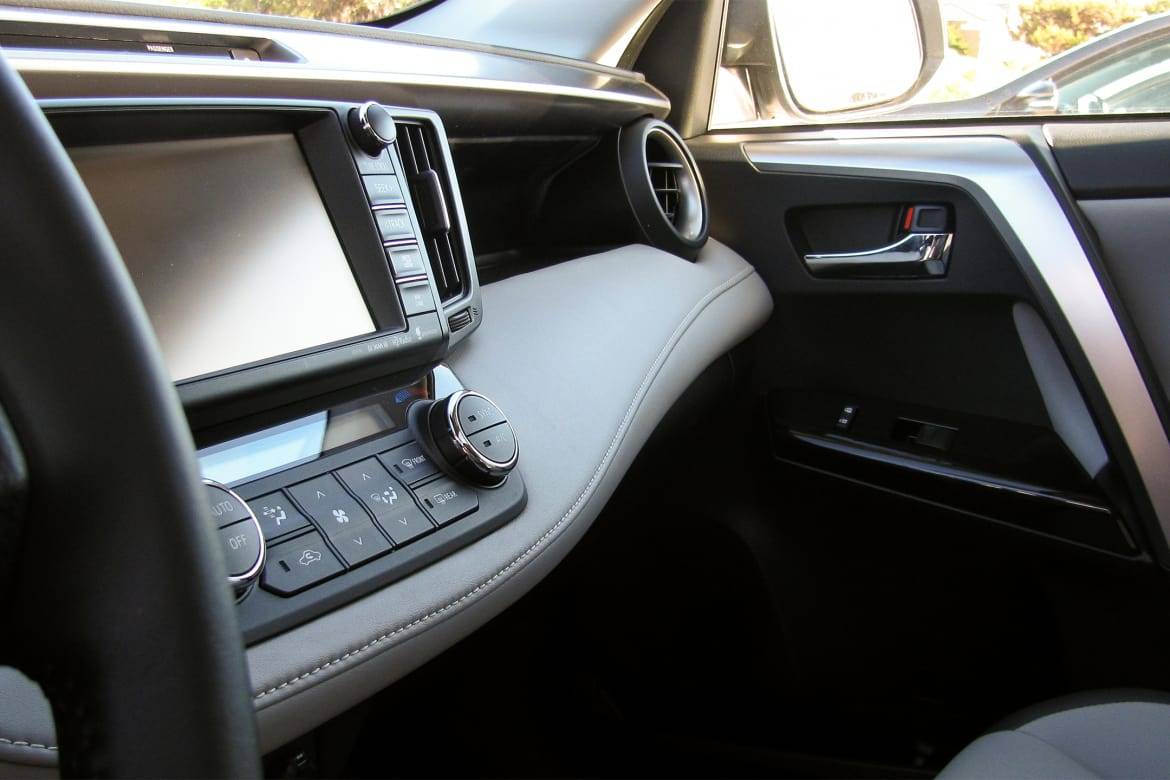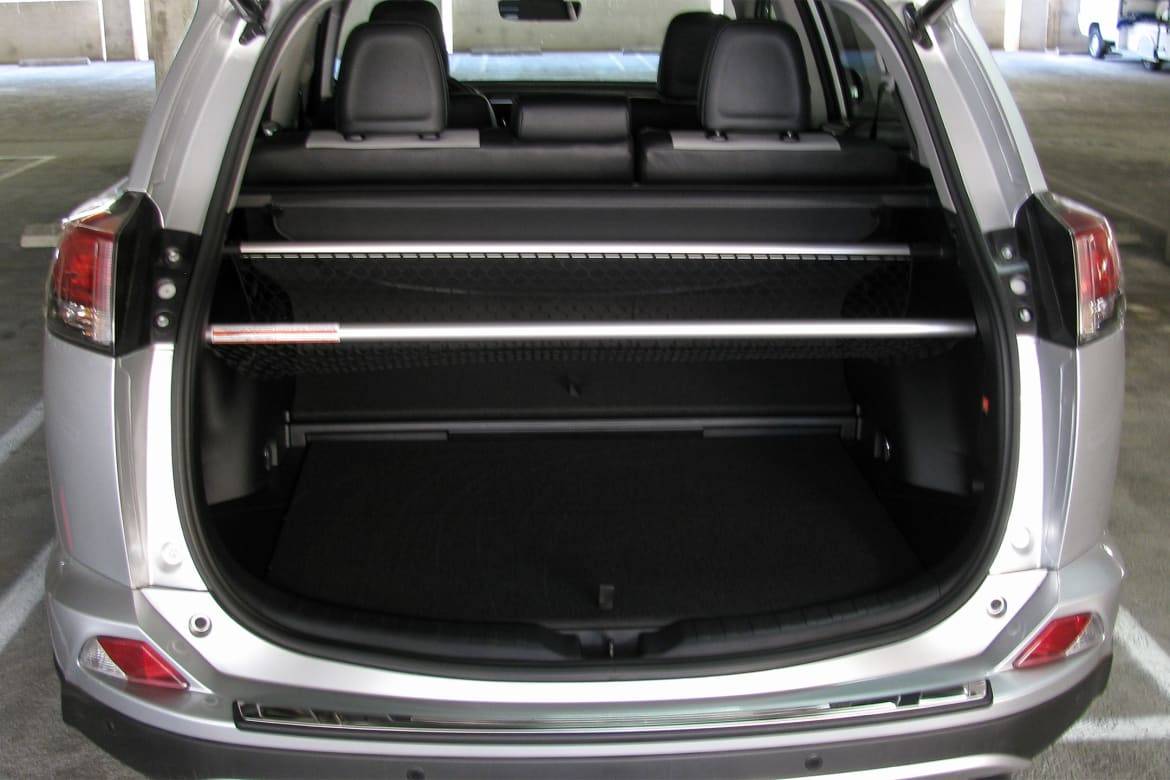2016 Toyota RAV4 Hybrid: First Drive


The 2016 Toyota RAV4 Hybrid is the first hybrid version of the RAV4 compact SUV, which has been lightly restyled for 2016. Available in the upper XLE and Limited trim levels, it offers better mileage plus more horsepower, torque and better acceleration than the gas-only RAV4.
Related: Toyota RAV4, RAV4 Hybrid: First Look
I drove both the XLE and Limited RAV4 Hybrids in hilly Southern California on a mix of highway and residential streets. I was also able to compare the hybrid to a gas-only RAV4 along the same roads. Like the larger Highlander Hybrid, the RAV4 Hybrid comes only with all-wheel drive. It’s EPA estimated to get 34/31/33 mpg city/highway/combined. The regular RAV4 gets an estimated 22/29/25 mpg city/highway/combined with all-wheel drive and 23/30/26 mpg city/highway/combined with standard front-wheel drive.
How It Drives
The 2015 gas-powered RAV4 was described as “competent” in our recent $28,000 Compact SUV Challenge, and that’s a good way to describe the overall driving experience of the hybrid version. Yes, there’s more horsepower (194 horsepower versus 176 in the gas-powered version), and there’s more torque (206 pounds-feet compared with 172 in the gas-powered models). But owing to the hybrid’s extra weight of about 320 pounds, the RAV4 Hybrid isn’t transformed into a rocket ship. It does feel quicker than the gas-powered version, but only slightly.
There’s good, sharp acceleration from a standstill, and any acceleration from low speeds is also acceptable for the class, but at highway speeds, when you need to make a pass, you do need to anticipate and plan your moves.

Though it’s not a typical continuously variable automatic transmission, the Toyota hybrid system uses continuously variable gear ratios rather than separate gears. The RAV4 Hybrid’s response is better than a lot of CVTs and hybrids I’ve tested. Instead of the “elastic” response of the worst models, the power comes on more directly with a predictable response. The RAV4 Hybrid does sound harsher, and the engine note is flatter than the gas-only model.
You never forget you’re driving a hybrid, either. There’s a persistent whine and/or whistle that comes from the hybrid system. It’s most noticeable on acceleration and braking. When you’re coasting along, the noise is pretty faint, so if you’re the sort to listen to music when you drive, you might not notice that particular noise.
Other Refinements
Toyota increased the amount of sound-deadening material in all RAV4 models for 2016, and it’s largely paid off in the hybrid version. Yes, there is the odd engine noise, but there’s very little wind noise, and while the road noise is still noticeable, it’s improved over the previous model.
The RAV4s also have a more uniform interior appearance across all trim levels. Gone are the sometimes mismatched trim pieces and, in a move that’s particularly welcome to my eyes, the faux carbon-fiber inlays around the door lock switches are history.

I was comfortable both as a passenger and as the driver during my day in the RAV4 Hybrid, and the new upper door trim padding on all but the base model played a part. I also think the material choices, especially the new mocha-colored interior, look at least as good, if not better, than what everybody else is offering in this class. While Toyota has made a number of changes to the interior design, it will still look familiar to RAV4 owners, so those who wanted a complete transformation will be disappointed.
Sadly, even on the top-of-the-line Limited trim I tested, there was only one USB port in the car, and I don’t think that cuts it in the days when everybody has a device that seems to constantly need charging.
Cargo Area Updates
Toyota also has worked a bit on the cargo area, and a height-adjustable power liftgate is standard on all RAV4s — hybrid or otherwise — in except the base LE trim (where it’s not offered as an option, either.) What’s neat about the Toyota system is that you can adjust how high the liftgate opens from the front seat so that if you’ve pulled into a garage with lower clearance, you can make that adjustment without getting out.

Also, the RAV4 Hybrid loses almost 3 cubic feet compared with the gas-powered RAV4 because of the hybrid system’s batteries. For reference, a cubic foot is about the size of a basketball, so the overall loss of space isn’t enormous.
Overall First Impressions
The RAV4 Hybrid is a smart car for Toyota to make, since the 2015 RAV4’s mileage was toward the back of the pack when we tested it against competitors head-to-head. The increased sound-deadening material is most welcome, and the fact that the RAV4 Hybrid gets more enjoyable performance while delivering better mileage is great.
Still, this is what people in the industry call a “midcycle refresh,” so it’s not a complete rethink of the RAV4. The interior design still has some odd layout choices, and while it is quieter than before, there is still noticeable road noise.
I’ll go into more depth about the RAV4 Hybrid’s safety features and provide more mileage comparisons in my expert review.

Former assistant managing editor Bill Jackson manages the Research section, and he enjoys triathlons and cross-country skiing.
Featured stories




